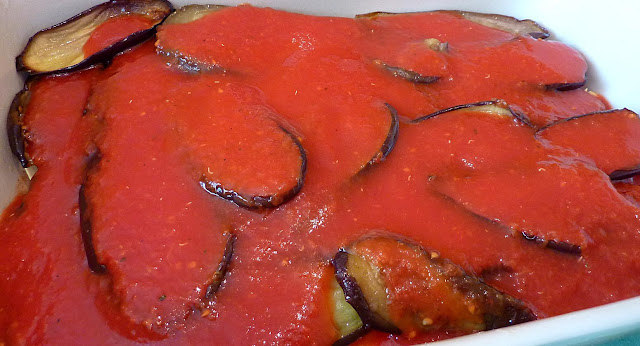Continuing my Franche-Comté theme, here's some information about a smoked sausage from that region. It's a big fat log of a sausage resembling a salami that's made in and around a town near the Swiss border in the Jura mountains, Morteau (pop. 6,600). In Lorraine and Alsace, and now all over France, Morteau sausages are served traditionally with sauerkraut (choucroute garnie).
I've adapted and translated this section from the official Saucisse de Morteau web site:
Since ancient times in what is now the Franche-Comté region of eastern France, people have preserved meats by salting and smoking them, in order to survive in the hard, cold climate of the Jura highlands. This ancient curing technique developed alongside a tradition of fattening hogs with the whey that was a by-product of local cheese-making (Comté cheese is another local specialty).
Even in Antiquity, cured and smoked meats made by the Celtic people of this area were exported not just to other parts of Gaul but all the way to Rome, where they became popular. Smoked pork from towns including Morteau, Montbéliard, and Luxeuil came to be recognized as the finest products of the region.
But back to Morteau...
In the beginning was the forest. Smoked meats didn't become a local specialty by accident.
The history of sausage-making in and around Morteau goes back at least to the 16th century, when the people living on the highest terrain in Franche-Comté undertook to tame the extensive pine and spruce forests of the Jura highlands. They used their only valuable possession, wood, to build their farms, to heat their houses and cook their food, and to cure meats in the smokehouses (called tuyés in the local dialect) that were a main feature of their farmsteads.
The Morteau sausage became an essential part of the local diet, especially for Sunday dinners and holiday feats. By the 18th century, Morteau sausages had been carried far and wide by merchants and travelers, and were enjoyed by people far from Franche-Comté.
The sausage-making tradition has been passed down over the centuries. Today, Morteau sausages are still cured in the traditional smokehouses of the region, the way they always have been, over smoldering pine, spruce, and juniper sawdust. Even the big companies that make Morteau sausages nowadays follow the old local methods.
Nearly 4,000 tons of Morteau sausages are produced annually, and the business is a mainstay of the local economy.
In January 2007, the name saucisse de Morteau was granted protected status in France, and in 2010 it was awarded the European IGP (Indication Géographique Protégée) label, meaning only sausages made in Franche-Comté by traditional methods and using locally produced pork can carry the name. Local people have formed a trade association to make sure that the sausages labeled as Morteau are of the highest quality.
Morteau sausages are cured but not cooked in the smoking process. The best way to cook one is to poach it is gently simmering water for 40 minutes. Don't prick it. If you live in France and eat meat, don't miss out. Cook a saucisse de Morteau as part of a pot au feu of beef and vegetables, or serve it with mashed or fried potatoes and a salad as a wintertime lunch. And don't forget the Dijon mustard.






















































